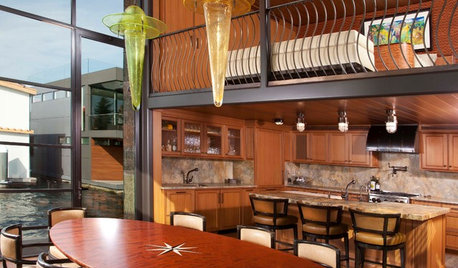pine bark fines in als 5-1-1 recipe
woody
6 years ago
Featured Answer
Sort by:Oldest
Comments (25)
westes Zone 9b California SF Bay
6 years agoRelated Discussions
Is this pine bark fine mixture OK for the 5-1-1 mix?
Comments (4)Thanks for your nice comments - My husband just finished making my 1/8" screed/sieve and now I finally have the ability to sift just about any size material-very exciting! Good point edweather. This is my first time trying the 5-1-1 mix and I have many different plants I need to accommodate in it - Tomatoes, Peppers, Lavender, Blueberries, Fig tree, etc. I want to eventually try out the gritty mix for the fig tree and blueberries, but right now I am going to start them out in the 5-1-1 mix as I have all the necessary ingredients at hand. Any thoughts on the differences between the 5-1-1 mixtures needed for the plants listed above? I have spent a lot of time reading past posts about the 5-1-1 mix and I vaguely remember Al(tapla) saying that the fine dust should not make up more than 1/6 of the total mix. I don't remember if that was in reference to a particular plant or if that is a general rule. One more question - After I make up a batch of the 5-1-1 mix can I use it right away or do I need to let it sit a while because of the lime?...See More1) Al's 5-1-1 mix. 2) Bark sources
Comments (10)Probably orchid mix - I believe they are well sorted by size (it is sold as small, medium or large in plastic bags, and size is as they say). Perhaps more expensive if lots needed. Repti bark is good, but many posted that it varies in size from bag to bag (also quite pricey if quantity is needed). I hardly use bark in gritty any more, since it is difficult to find right size (even if I don't mind sifting); and usually there is too much sapwood & I don't feel like picking it. I would like to find a source of good bark as I like to use it in 5.1.1...See MoreWhich pine bark fines (for 5-1-1)?
Comments (1)My recollection is that you DO NOT want composted material. I would go with the 12 mm medium pine bark fines. Per Al, his gritty mix bark recipe should include 1/8" to 3/8" pieces. After sifting them out, sift again to remove the smaller particles. It looks like the 6 mm material has a lot of very fine bark and your loss would be much higher than the 12 mm bark. It's helpful if you can actually see the material as pictures can be deceiving and each lot could be different. Keep in mind that I'm no expert but I've sifted a lot of bark (different brands, names, etc.). Good luck!...See MoreSource for pine bark fines in 5-1-1 in Dallas area
Comments (9)I actually prefer the nuggets because its all bark and not yellow wood or garbage. Yes they are too big for potting mix as is but I chop them up in a blender (don't tell my wife I do it when she's not here). Just cover the mulch with water and pulse it a few times. Then I pour the mixture through a pond basket to wash out the fines that are too fine. I make a big batch and put them in a bucket with blood meal and fish emulsion (yes it stinks for a day or two) then a week or two later rinse and its ready to be a potting mix component Wanton i think 5 1 1 is a recipe like 5 of these one of those and one of those....See Moreedweather USDA 9a, HZ 9, Sunset 28
6 years agowestes Zone 9b California SF Bay
6 years agoedweather USDA 9a, HZ 9, Sunset 28
6 years agolast modified: 6 years agowestes Zone 9b California SF Bay
6 years agolast modified: 6 years agowestes Zone 9b California SF Bay
6 years agolast modified: 6 years agoedweather USDA 9a, HZ 9, Sunset 28
6 years agolast modified: 6 years agowestes Zone 9b California SF Bay
6 years agolast modified: 6 years agoUser
6 years agolast modified: 6 years agowestes Zone 9b California SF Bay
6 years agolast modified: 6 years agoUser
6 years agotropicofcancer (6b SW-PA)
6 years agomblan13
6 years agowestes Zone 9b California SF Bay
6 years agotropicofcancer (6b SW-PA)
6 years agolast modified: 6 years agowestes Zone 9b California SF Bay
6 years agotropicofcancer (6b SW-PA)
6 years agowestes Zone 9b California SF Bay
6 years agotropicofcancer (6b SW-PA)
6 years agowestes Zone 9b California SF Bay
6 years agolast modified: 6 years agotropicofcancer (6b SW-PA)
6 years agowestes Zone 9b California SF Bay
6 years agotropicofcancer (6b SW-PA)
6 years ago
Related Stories

HOUZZ TOURS13 Character-Filled Homes Between 1,000 and 1,500 Square Feet
See how homeowners have channeled their creativity into homes that are bright, inviting and one of a kind
Full Story
EXTERIOR COLORChoosing Color: 1 Home Has Fun With 5 Different Color Schemes
See a home’s potential for transformation with several new hues. Do you have a favorite?
Full Story
CONTEMPORARY HOMESHouzz Tour: A Bark-Covered Floating Getaway on Lake Union
If the unusual siding doesn’t clue you in to the fine craftsmanship in this floating home, the handmade handrails, lights and furniture will
Full Story
KITCHEN COUNTERTOPSKitchen Countertop Materials: 5 More Great Alternatives to Granite
Get a delightfully different look for your kitchen counters with lesser-known materials for a wide range of budgets
Full Story
KITCHEN DESIGNWorld of Design: Favorite Recipes From Food Lovers Around the Globe
Travel with your tastebuds and experience for yourself these international foodies' favorite dishes
Full Story
MOST POPULARPros and Cons of 5 Popular Kitchen Flooring Materials
Which kitchen flooring is right for you? An expert gives us the rundown
Full Story
FALL GARDENING5 Ways to Put Fall Leaves to Work in Your Garden
Improve your soil and yard the organic way with a valuable garden booster that grows on trees
Full Story
KIDS’ SPACES5 Ideas for a Great Home Learning Zone
Get your child off to a good start this school year with homework areas and strategies that reduce the frenzy
Full Story
ORGANIZINGThe 5 Decisions That Can Lead to Clutter
Find out how the little choices you make can add up to a lot of extra stuff at home — and what to do about it
Full Story
HOLIDAYS5 Ways to Avoid Holiday Season Burnout
You can enjoy the traditions and activities that matter to you and let go of the rest
Full Story




gardengal48 (PNW Z8/9)